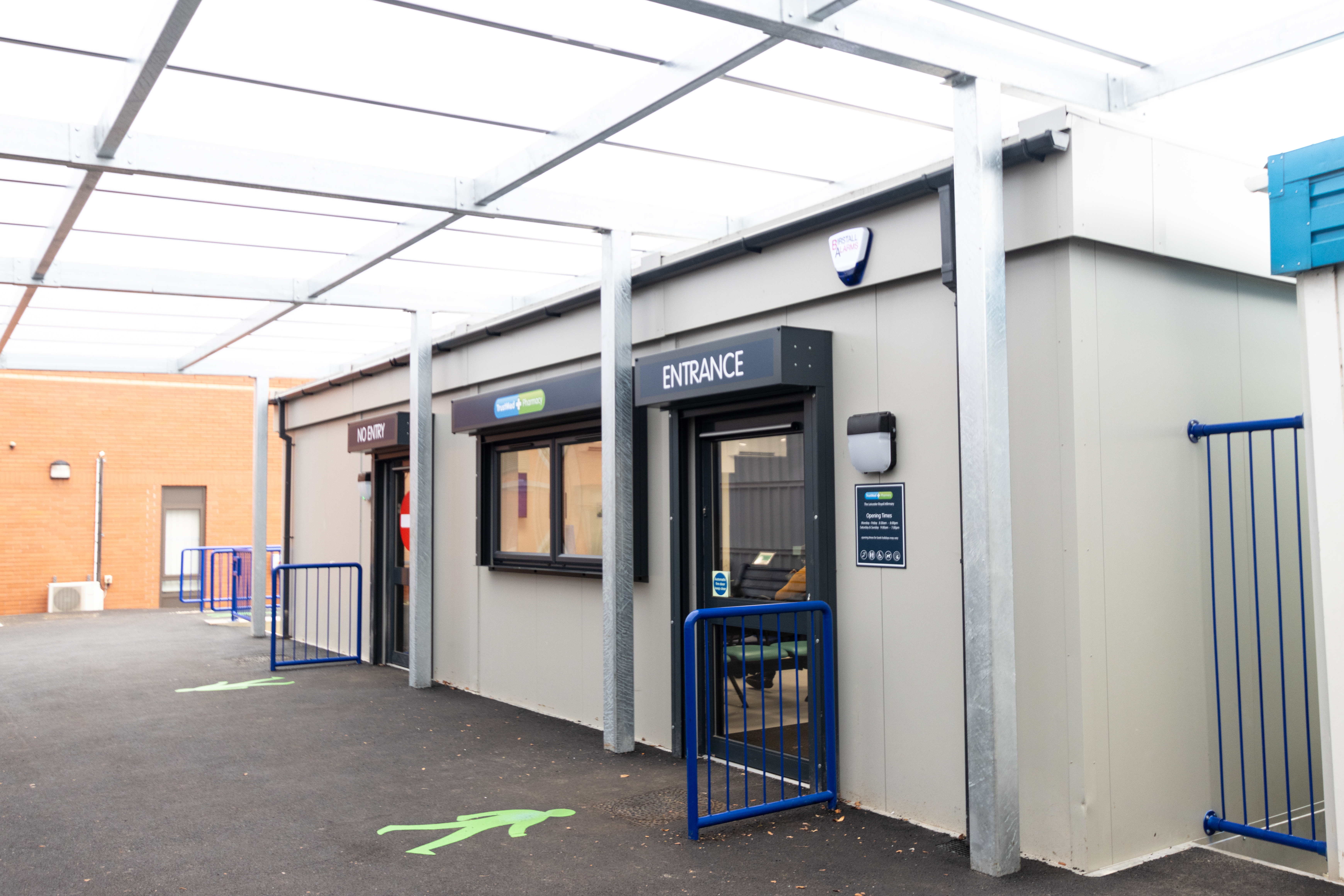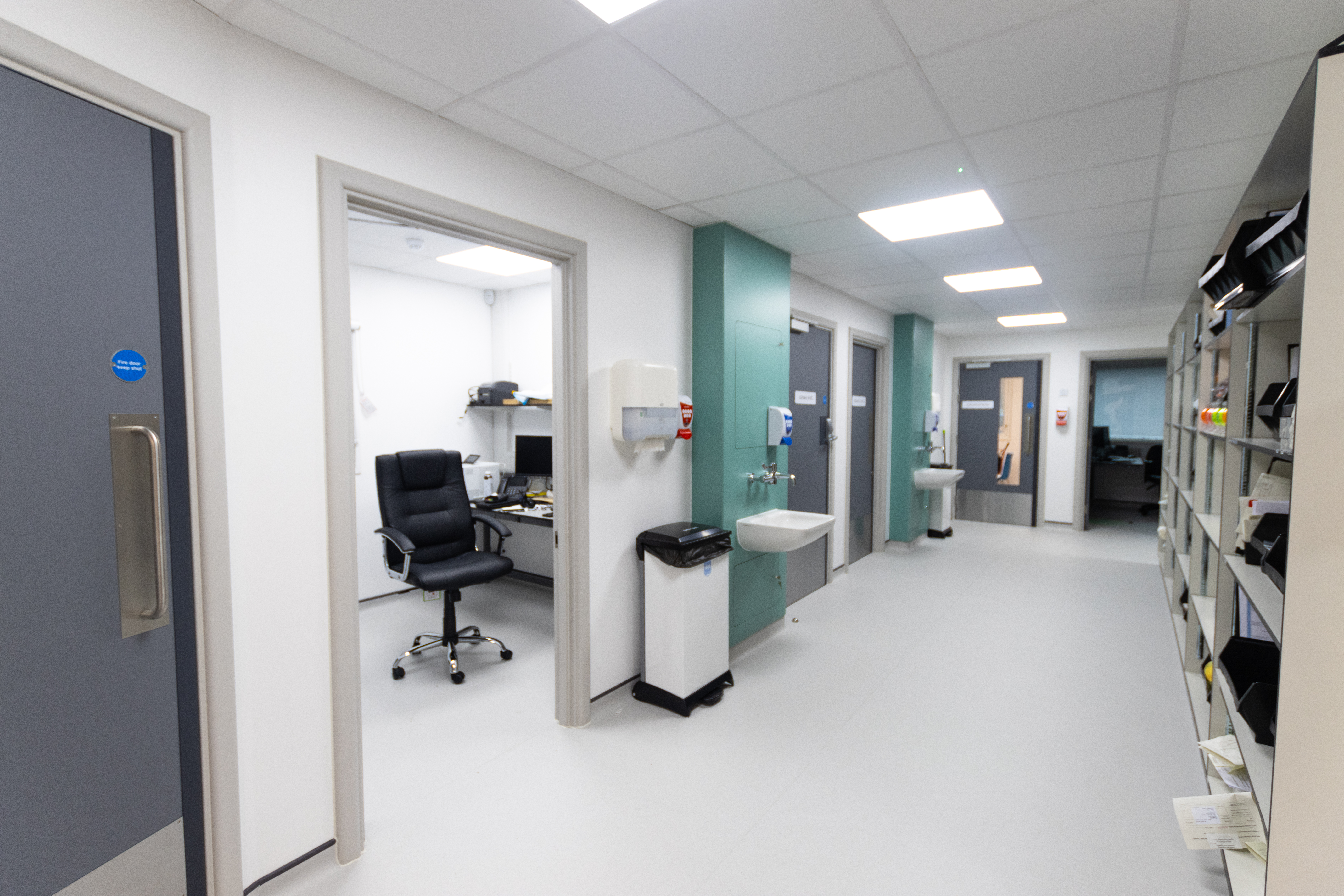The NHS is one of the UK’s most valued institutions, but right now it is under more pressure than ever. Headlines about record waiting lists, staff shortages and overstretched hospitals fill news outlets almost daily. Behind those headlines are millions of patients waiting for treatment, thousands of staff working flat out, and an infrastructure that is struggling to keep up.
While there is no single solution to these challenges, modular buildings provide one approach that is already making a difference. From new wards to diagnostic hubs, these versatile spaces are helping the NHS respond faster to patient demand. Modular healthcare facilities are playing a vital role in supporting the sector.
With higher patient demand and tighter budgets, the UK healthcare sector is under increasing pressure. The numbers speak for themselves.
According to NHS England, as of early 2025, around 7.4 million patient pathways were waiting for treatment in England.
In A&E, one in four patients waited more than four hours to be admitted in March 2025. And over 46,000 patients faced waits of 12 hours or longer before getting a hospital bed.
One in seven hospital beds in England is occupied by someone who is medically fit to leave but cannot be discharged due to delays in social care.
For patients, this means delays and uncertainty. For staff, it means constant pressure to deliver high-quality care with limited space and resources. And for the NHS as a whole, it means a growing need to find solutions that can add capacity quickly, without draining budgets or disrupting services.

Modular healthcare buildings can provide a cost-effective and fast solution, adding additional space to hospitals to help ease some of that pressure. Unlike traditional construction, which can take months or years, modular buildings are designed and manufactured off-site, then assembled quickly on hospital grounds.
Speed: Projects that might normally take two years can be delivered in just a few months. In some cases, fully equipped modular healthcare facilities have been completed in as little as 20 weeks.
Cost-effectiveness: With controlled off-site manufacturing and less disruption on-site, modular methods are typically far more affordable than traditional builds.
Flexibility: Modular healthcare buildings can be customised to suit a wide range of clinical needs, from outpatient departments to theatres and recovery wards. They can also be relocated, expanded or repurposed if requirements change.
Compliance: Every building is designed to meet strict NHS standards, ensuring safety and quality are never compromised.
These benefits make modular healthcare facilities an obvious choice for a healthcare system that needs to respond quickly to changing pressures.
Modular construction helps reduce long waiting lists. More space means more patients can be seen and treated. When hospitals do not have enough operating theatres, treatment rooms or beds, patients wait longer. By installing modular healthcare buildings such as new wards, diagnostic suites or day surgery centres, Trusts can increase capacity much faster than through traditional builds.
For example, some hospitals have recently introduced entire modular healthcare facilities to create hundreds of additional beds almost overnight. Others have added modular diagnostic hubs, giving patients quicker access to scans and tests that might otherwise have taken months. In many cases, these new facilities have been designed, manufactured and installed in a matter of weeks - dramatically faster than a conventional building project.
These examples show how modular healthcare buildings are not just about temporary fixes. They are about providing high-quality, permanent healthcare spaces that can adapt as needs evolve.
A&E is often described as the front door of the NHS, and as such, they are overflowing. Patients waiting on trolleys for hours, ambulances queuing outside, and staff working under extreme pressure have sadly become familiar sights.
Modular healthcare facilities can provide immediate relief. By creating additional bed bays, ambulance receiving centres or discharge lounges, hospitals can ease the flow of patients through emergency departments. More space means patients can be seen faster, and staff can work more effectively.
Delayed discharge is another major challenge. With thousands of patients stuck in hospital beds while they wait for social care, valuable space is blocked for those who need acute treatment. Modular buildings provide a practical solution through purpose-built discharge lounges.
These modular healthcare buildings give patients a safe, comfortable environment while they wait for medications, transport or care packages to be arranged. By freeing up acute beds more quickly, modular lounges support patient flow and reduce pressure on wards.
Healthcare demand is constantly shifting. Seasonal flu, new treatment pathways, and unforeseen events like the pandemic can all create sudden spikes in demand. Traditional construction methods are too slow and inflexible to cope with this.
Modular healthcare facilities are different. They can be reconfigured, expanded or even relocated as needs change. A modular building that serves as a ward today could become a diagnostic hub tomorrow, ensuring NHS Trusts can adapt their estates in line with patient demand.
Importantly, this flexibility also supports long-term strategy. The government’s New Hospital Programme and the NHS’s focus on modern methods of construction mean modular healthcare buildings are set to play a key role in the future of healthcare infrastructure.

While exact figures on how many UK hospitals currently use modular healthcare facilities are hard to pin down, it is clear that adoption is growing rapidly. The NHS is increasingly turning to modular solutions, with Trusts across the UK investing in new wards, theatres, and diagnostic hubs built using modern methods of construction. This shift reflects a wider recognition of the role modular healthcare buildings can play in supporting patient care.
Specialist providers are working with NHS Trusts across the country to deliver everything from technical theatres and endoscopy suites to pathology labs and clean rooms. What was once seen as a short-term option is now firmly established as a long-term solution.
The NHS is under immense strain, but modular healthcare buildings offer a practical and proven way to provide relief. By delivering new healthcare facilities quickly, cost-effectively and to the highest standards, these buildings are helping Trusts reduce waiting lists, ease A&E bottlenecks and improve patient flow.
From wards and theatres to diagnostic hubs and discharge lounges, modular healthcare facilities are supporting the NHS to deliver better care when and where it is most needed.
At a time when every bed, every room and every week matters, modular buildings are not just a construction method. They are part of the solution to creating a more resilient, responsive and patient-centred healthcare system.
At GCS Group, we have extensive experience delivering modular healthcare facilities that help providers meet today’s urgent demands while planning for tomorrow. Whether you need additional ward space, a specialist diagnostic suite or a flexible facility that can grow with your needs, our team can guide you from design through to installation.
Get in touch today to discuss your project and discover how our modular healthcare buildings can support your patients, your staff and your long-term care goals.